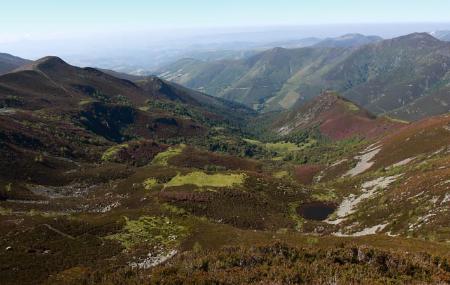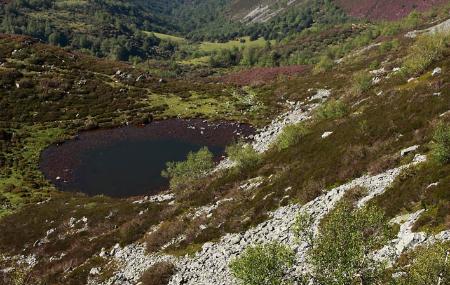
Teixedal Lagoons
- Title Cangas del Narcea Western Asturias
- Maximum elevation Maximum elevation: 1.780 m.
Images
Info
They are formed by a group of high mountain lakes at different heights around the Rabo de Asno, Laringuín, La Yerba, Negra and Pozu Xirona peaks. We could say that they are the most hidden discovery of the Fuentes del Narcea, Degaña and Ibias Natural Park.
The extent of the basins and spaces is limited, as befits the rugged terrain in which they are located. The Black Lagoon or Rabo del Asno is a permanent lagoon located in the upper cirque, and the Teixedal Lagoon, the Laringuín Lagoon and the Chaguninos also belong to this group.
Plant life
Vegetation maps show evolutionary differences between these lagoons. The Laguna Negra or Rabo de Asno, has a stony coastline where bulbous sedge is scarce, while buttercups conquer deeper waters and there is humus deposited both in the places where buttercups grow and on the bottom of the lagoon, which is the reason for the colouring of the water. The next in terms of plant production is the Laringuín lagoon, which is currently visited by livestock and where Potamogeton reaches great coverage where the accumulation of fine sediments is greatest, while the shallower areas and with the stony bed almost uncovered are the domain of Sparganium, with great competitors such as the large Carices, with Fontinalis and Callitriche also being found in the places where there are contributions of water to the basin.
At a more advanced stage are the Chaguninos and Teixidal, a few temporary water wells, remains of the primitive lagoon which is now clogged, colonised by Carex nostrata and giving way to mosses on which small hornworts will develop, with their retinue of turphophilous plants. The peat bog in the places invaded by the gorbiz begins to blend in with the terrestrial environment, a state towards which they evolve.
Wildlife
In the Black Lagoon there are bivalve molluscs, coryxids, Gerris Velia, dragonfly larvae, trichoptera, Triturus alpestris, Rana temporaria, Salamandra salamandra. With the exception of the latter, the remaining aquatic animals were also found in the Laranguín lagoon, where leeches (Haemopis and Helobdella) are also very abundant and there are Notonecta, Gyrinus natator, Dytiscus marginalis, other coleoptera, mites and Triturus helveticus.
Map
Location
It can be reached from Parada La Viecha, via El Bayo, although it can also be reached from Xinestosu, crowning the southern slope up to the pass of La Gobia.




